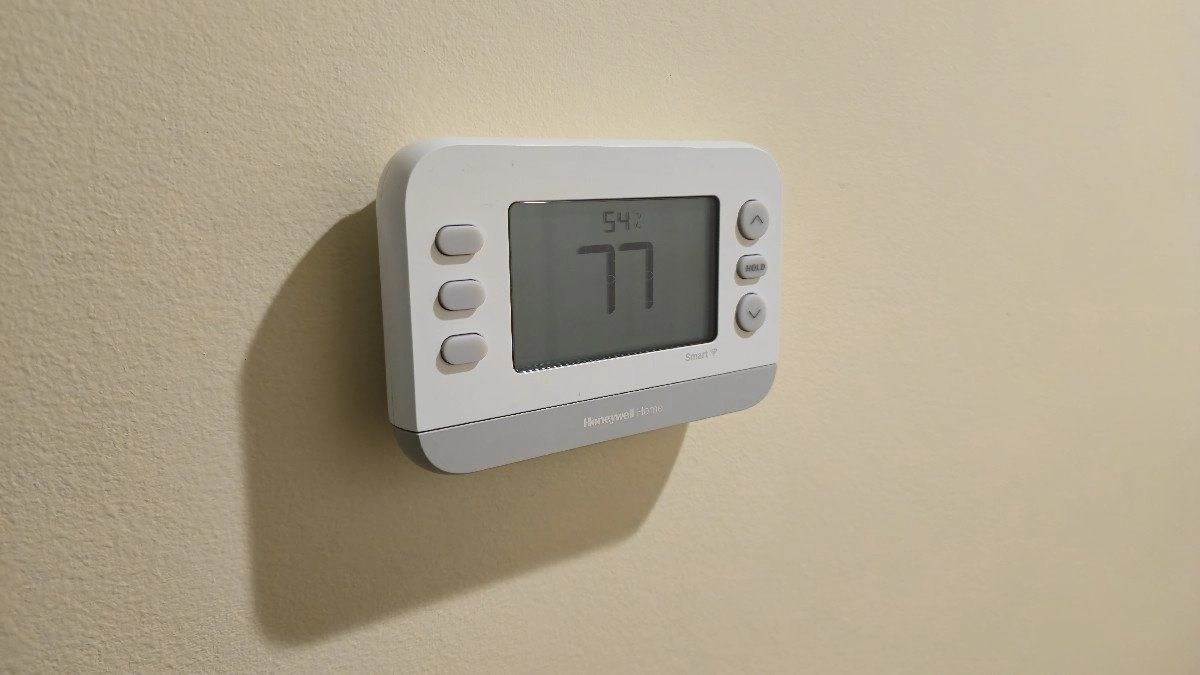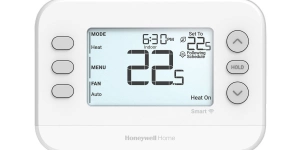I live in a home that is remarkably close to net-zero, due to our use of solar panels, electric cars, and all-electric appliances. Energy-efficiency is an important part of making this happen, and, surprisingly, so is our use of Matter devices. In providing a standardized way for the smart gear in our home to communicate, Matter and emerging AI tools are helping reduce the load homes place on the grid and batteries alike.
Matter devices are often energy-efficient and all-electric
Matter devices are virtually all electric. Think Matter-compatible space heaters, rather than a natural gas heater or wood-burning stoves. Such a device is feasible to power with renewable forms of energy, and even when that electricity comes from fossil fuels, they still help reduce the amount that needs to be burned.
Many Matter devices are battery-powered, like my Umbra Cono portable smart lamp, SwitchBot motion sensor, and my SwitchBot Meter Plus.
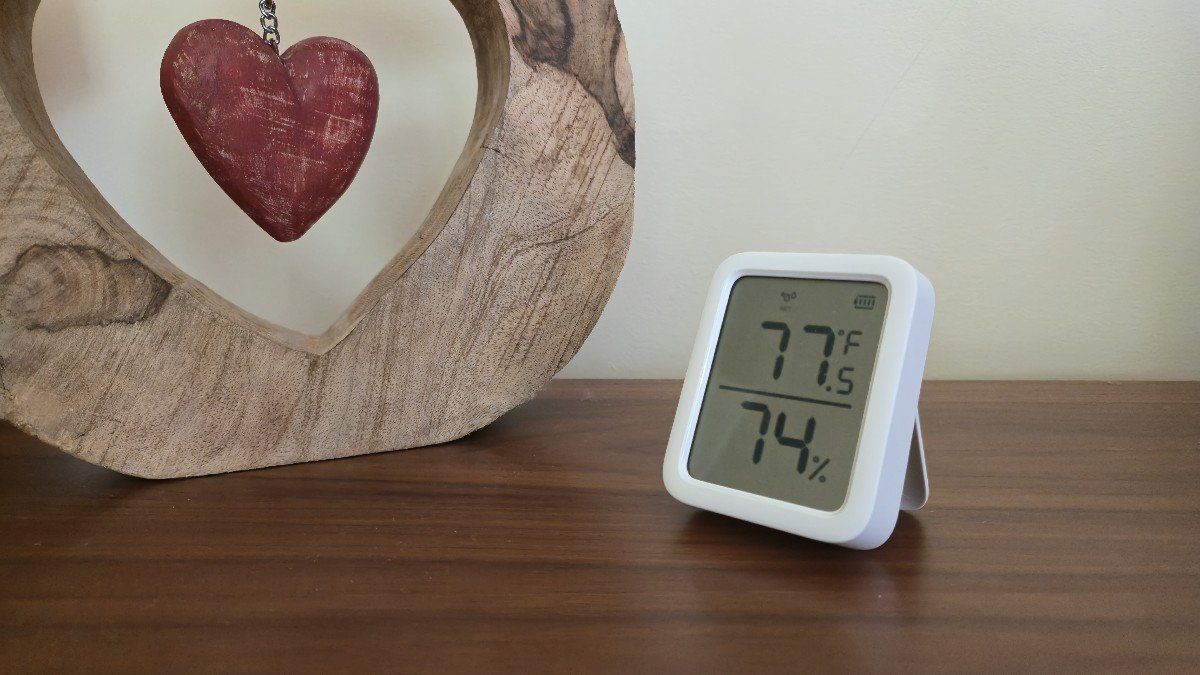
These are devices that need to be energy-efficient in order to have any battery life at all. By definition, a device that’s running off a battery isn’t pulling power from the house. Those that do need to recharge tend to pull less power, over all, than an alternative that’s plugged in all the time.

Umbra Cono Portable Smart Lamp
The Umbra Cono Lamp is an extended color light compatible with Matter, offering a diverse color palette for personalized home lighting.
Matter reduces dependence on energy-hungry data centers
Matter devices don’t need an ongoing internet connection in order to function. In this way, Matter devices contrast with prior smart devices in a way that’s beneficial not just for our privacy and control over our own homes, but for energy usage as well.
Most Matter over Wi-Fi devices communicate through your router to whichever device functions as your Matter controller. That centralized device then communicates with your phone, smart speaker, or your other chosen way of connecting to your home.
Matter cuts out the need for a cloud service operating in a data center and the rising energy demands that come from building more of those. This not only reduces the power demands on the grid at large, but it reduces how much energy the devices on our home need to use. As you can tell by turning off the data connection on your phone, batteries last much longer when they aren’t constantly pinging the web.
To fully achieve these savings, your smart home platform needs to operate locally as well. Apple Home and Home Assistant both operate directly on hardware stored in your home, whereas Amazon Alexa, Google Home, and Samsung SmartThings all rely on the cloud. You also need to watch out for the many Matter-compatible devices that also rely on the cloud for core functionality.
Matter devices produce more data for homeowners and AI to analyze
Matter devices generate more information than products without smart features. A smart plug from Eve Energy, for example, can tell you how much power an appliance uses over the course of a day. Your lights are generating when on. That then provides you with knowledge to make informed decisions.
Since installing smart switches, I’ve learned that forgetting the lights on in our hallway for 24 hours can use well over half a kilowatt of energy. Even though we are using LEDs, there are multiple bulbs that come on at once, each using around eight watts per hour. 30–40 watts per hour adds up quick.
Likewise, a Matter-enabled thermostat, thermometer, or hygrometer can not only make temperature and humidity accessible on your phone or smartwatch, but they provide you with ways to automate your home’s response.
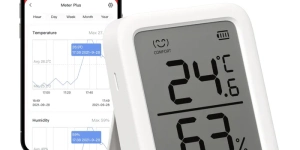
SwitchBot Meter Plus
An accurate and versatile indoor thermometer and hygrometer with real-time tracking, smart notifications, and exportable environmental data.
Informed, conscious action goes a long way toward reducing energy use. By taking these actions, we make up for the slight uptick in energy use or devices use generating and communicating this data.
AI can make suggestions or even manage energy use
AI tools are appearing in some smart home ecosystems that are also able to take advantage of this data, using it to provide recommendations on what time to run devices, what settings to use, and which energy-draining issues need addressing. Whenever I open Samsung SmartThings, whether on my phone or on my TV, I’m greeted by such AI-generated recommendations.
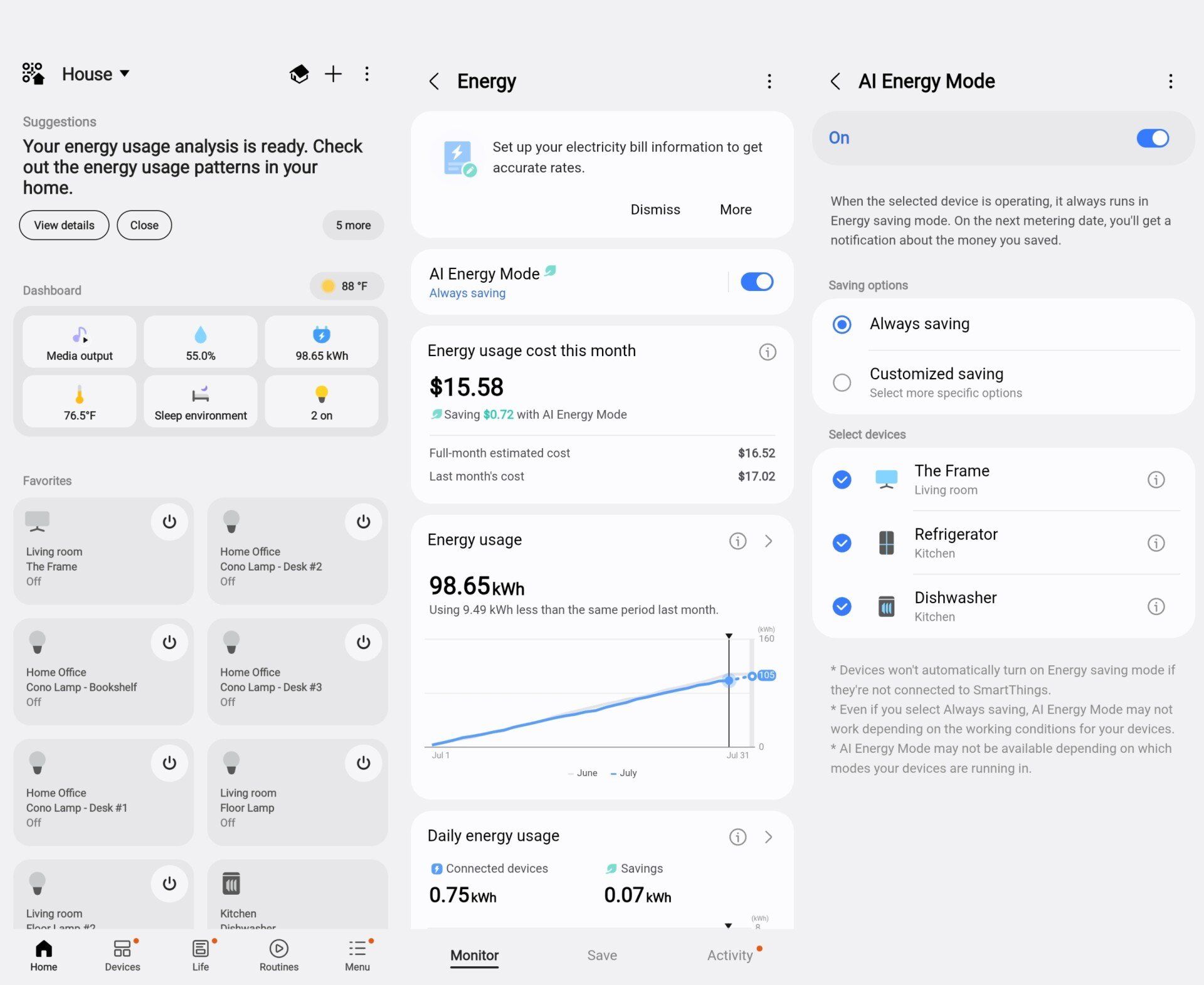
Increasingly, AI can also be used to automate energy use, both at home and throughout the wider grid. Households with smart thermostats, for example, can be automatically adjusted when the grid is under increased strain without a human operator needing to make the call. Such tools can also help homeowners make the most of time-of-use utility rates.
Matter makes a difference
I personally appreciate how simple Matter makes it to build an energy-efficient smart home. I don’t need to factor into the equation which platforms my various smart gadgets will work with. I can simply choose the most compelling options that come with a Matter badge on the box.
Choosing energy-efficient products needs to be easy if such products are going to be chosen at all and make a meaningful dent in the amount of energy we all use.
